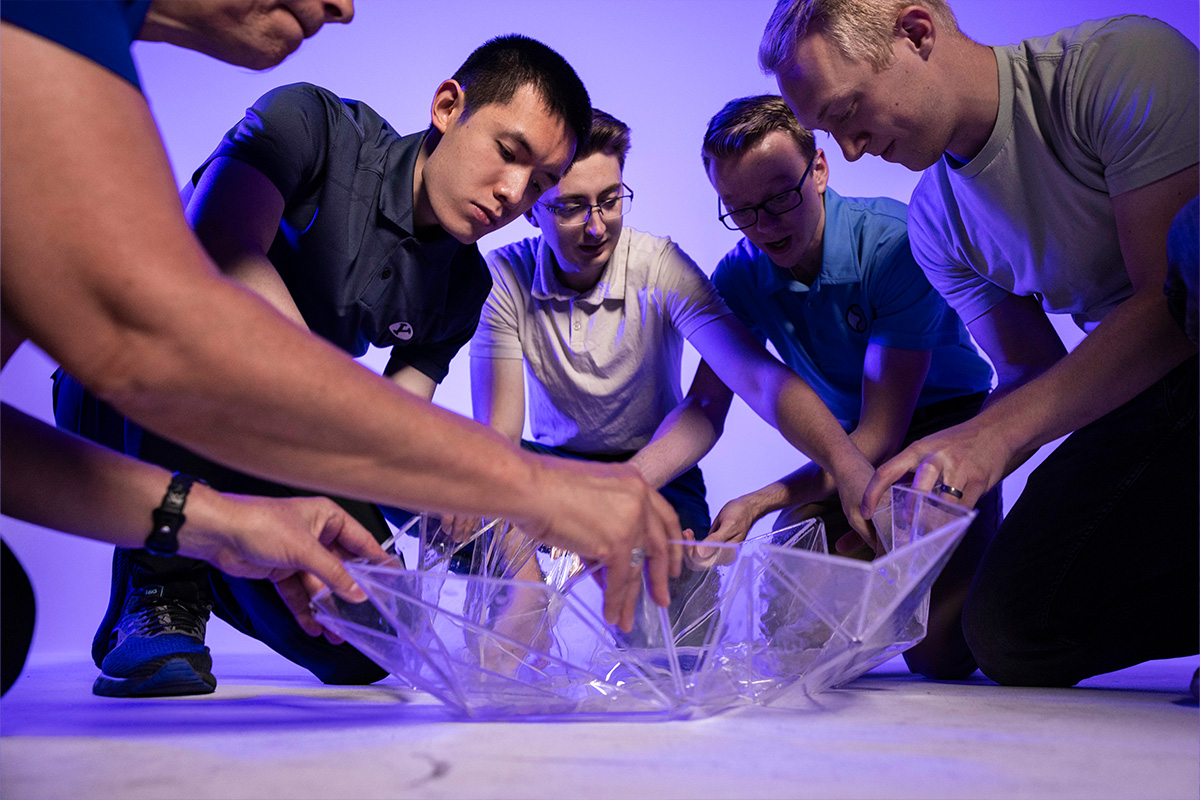Bloom Patterns: A New Family of Origami Designs
At the recent OrigamiUSA Convention in New York City, I spoke with Robert J. Lang, one of my greatest origami inspirations and mentors. He explained that he had been working with the BYU Compliant Mechanisms and Robotics Group (CMR) on a publication exploring a new family of origami designs called Bloom patterns. Robert put me in contact with BYU professor Dr. Larry Howell and student Kelvin Wang, who led the research for the paper.
 Dr. Larry L. Howell and Kelvin Wang. Photo: Brigham Young University
Dr. Larry L. Howell and Kelvin Wang. Photo: Brigham Young University
The publication, titled "Bloom patterns: radially expansive, developable and flat-foldable origami", was published on August 20, 2025. It explores the generalized and standardized definitions of Bloom patterns as well as various characteristics that make them potentially useful for real-world applications, such as deploying objects in space.
 BYU CMR folding a Bloom pattern. Photo: Brigham Young University
BYU CMR folding a Bloom pattern. Photo: Brigham Young University
Before the paper was published, I met with the BYU CMR team virtually. We discussed the idea of creating a video tutorial to help people fold a Y6.2 Bloom pattern (a regular homogeneous hexagonal second-order Yoshimura Bloom pattern). The first challenge was coming up with an intuitive folding sequence. I wanted viewers to be able to fold the Y6.2 from a blank hexagon without any unnecessary precreases. After lots of experimentation, I found an clean, simple, and intuitive folding sequence and recorded the tutorial.
The feedback so far has been extremely positive. I have seen quite a few completed Bloom patterns already, so I consider the tutorial a success! The video has even been featured in Smithsonian Magazine and on BYU's website.
Be sure to check out my video tutorial if you'd like to try folding a Bloom pattern yourself!